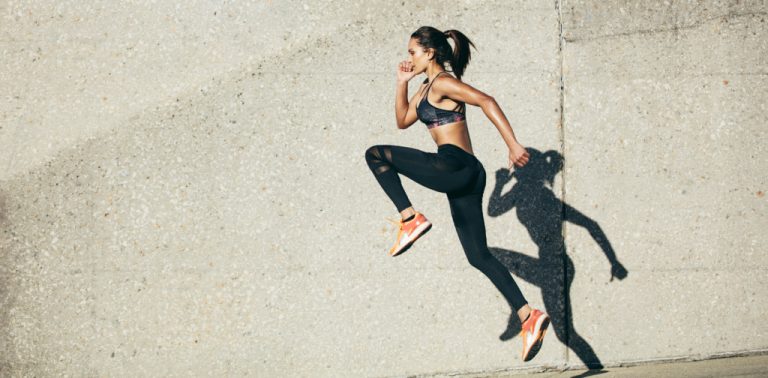The information shared in this post is for informational purposes only and should not be considered as a replacement for professional medical advice. The statements made on this article regarding CBD have not been evaluated by the Food and Drug Administration. The efficacy of CBD has not been confirmed by FDA-approved research. CBD is not intended to diagnose, treat, cure or prevent any disease. Consult your doctor before using CBD, especially if you have any medical conditions. Your doctor can help determine if CBD is right for you.
Are you experiencing soreness after your eccentric workouts? The combination of CBD and eccentric exercise has become a popular topic as CBD is being explored for its potential role in recovery after exercise, with interest growing among fitness enthusiasts. This article aims to investigate what research says about CBD’s role in your post-exercise regime and to determine if it genuinely reduces discomfort and inflammation.
What You’ll Discover
- Preliminary research into the interaction between CBD and the endocannabinoid system is underway to understand its potential implications for recovery and performance following eccentric exercise.
- Initial studies, still in the early stages, are examining the effects of CBD on symptoms such as Delayed Onset Muscle Soreness (DOMS) following exercise, with further research needed to draw conclusive results, and more extensive studies with larger populations needed to confirm these preliminary findings.
- Adherence to anti-doping regulations and CBD’s legality are important considerations for athletes who use CBD.
CBD and Eccentric Exercise: An Overview
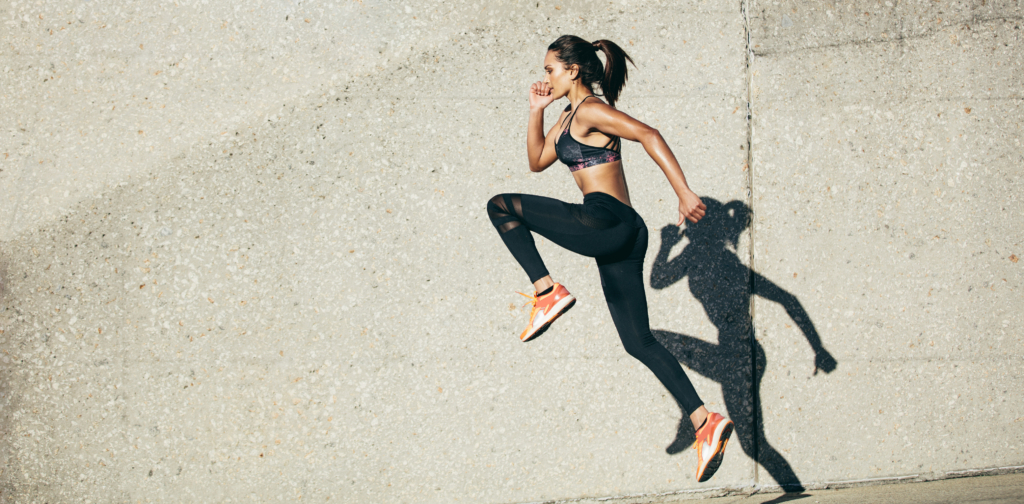 Athletes have always been curious about using innovative methods to enhance their performance and speed up their recovery. One method gaining attention is the use of cannabidiol (CBD) in exercise.
Athletes have always been curious about using innovative methods to enhance their performance and speed up their recovery. One method gaining attention is the use of cannabidiol (CBD) in exercise.
Many CBD products are now available on the market, including CBD oil and cannabidiol supplements, all of which promise benefits such as improvements in pain, better sleep, and enhanced recovery. However, it’s important to understand how CBD interacts with the demands of eccentric exercise and what current research says about this combination.
In exercise physiology, eccentric exercise is characterized by muscle-lengthening movements, such as lowering into a squat or press-up. It differs from other resistance training because it offers unique benefits, including greater strength gains and lower energy expenditure. (1)
Additionally, eccentric exercise is also known for causing delayed onset muscle soreness. CBD is under investigation for its potential properties and how they might relate to common concerns in eccentric exercise, such as discomfort and soreness.. (2)
Definition of Eccentric Exercise
Eccentric exercise, often associated with the term ‘negative work,’ involves muscle lengthening in response to an external load. For example, it’s the lowering phase when performing a bicep curl or lowering into a squat.
What’s interesting about eccentric exercise is that it requires less oxygen and energy compared to concentric exercises. This makes it less strenuous, especially for those undergoing rehabilitation or dealing with arthritis, tendinopathy, or Parkinson’s disease. (1)
The Role of CBD in Exercise
Derived from the cannabis or hemp plant, CBD is a non-intoxicating cannabinoid with therapeutic potential that could be of particular interest to athletes. It comes in various forms, such as:
- Oils
- Capsules
- Topicals
- Edibles
Each provides a distinctive consumption method. Its legality varies by country, but it’s permitted in numerous countries, including the United States, Spain, Germany, and China, making it easily accessible to athletes and fitness enthusiasts worldwide. (3)
One of the reasons CBD is gaining traction in the sports world is due to its reported benefits, including:
- Anti-inflammatory effects
- Analgesic effects
- Faster recovery
- Improved performance, particularly in strenuous activities like eccentric exercise
While some studies haven’t found significant improvements in body composition, strength, or mental health with CBD use, ongoing research is exploring its potential in regulating athletes’ mood, pointing towards its psychological effects alongside the physical.
Current State of Research
Current research on CBD and eccentric exercise is still in its early stages, with pilot studies employing double-blind, placebo-controlled trials to understand better the effects of CBD on exercise-induced muscle damage and inflammation. Despite small sample sizes, these studies have provided some intriguing insights. (2)
For instance, one randomized controlled pilot trial found that CBD might affect inflammation markers like Interleukin-6 post-exercise. While these findings are promising, they also highlight the need for larger sample sizes and more comprehensive studies to fully understand the role of CBD in exercise. (2)
The Science Behind CBD’s Effects on Eccentric Exercise
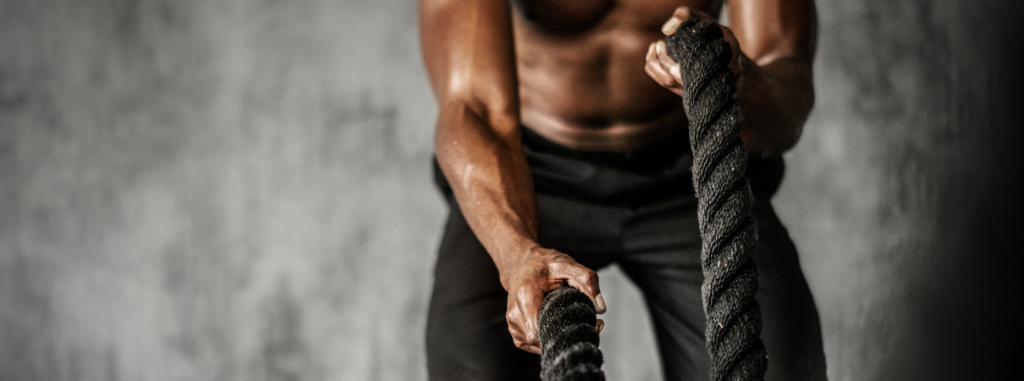 To understand how CBD might influence performance and recovery in eccentric exercise, we must examine its interaction with the endocannabinoid system. This regulatory system, vital to our bodies, is a key player in CBD’s potential benefits. Interestingly, this system is also activated during exercise, leading to increased levels of certain endocannabinoids in the bloodstream. CBD’s ability to enhance this response could be one way it contributes to the recovery process after strenuous exercise.
To understand how CBD might influence performance and recovery in eccentric exercise, we must examine its interaction with the endocannabinoid system. This regulatory system, vital to our bodies, is a key player in CBD’s potential benefits. Interestingly, this system is also activated during exercise, leading to increased levels of certain endocannabinoids in the bloodstream. CBD’s ability to enhance this response could be one way it contributes to the recovery process after strenuous exercise.
In addition to its interaction with the endocannabinoid system, CBD may have several benefits for post-exercise recovery. (4)
- Research is exploring how CBD might interact with inflammation signals following exercise, aiming to understand its potential effects.
- Studies are looking into CBD’s potential interaction with pain perception following exercise to better understand its effects.
- CBD is suggested to mitigate the stress response by inhibiting cortisol production, presenting itself as a potential tool for athletes.
These properties have the potential to make CBD a valuable tool for athletes looking to enhance their post-exercise recovery.
Endocannabinoid System and Exercise
Exercise is known to activate the endocannabinoid system, which increases certain endocannabinoids like anandamide (AEA) and 2-arachidonoylglycerol (2-AG) in the bloodstream. These substances are produced by the muscles during exercise and are believed to cause the feeling of euphoria, known as the “runner’s high.” (4)
Notably, CBD has been observed to augment endocannabinoid signaling, potentially contributing to improved recovery and the overall exercise experience. This suggests a possible synergy between CBD and exercise, with CBD helping to enhance the natural benefits of exercise on the endocannabinoid system. (2,4)
Anti-inflammatory Properties of CBD
Preliminary research suggests that CBD might offer potential anti-inflammatory benefits, which could be of interest to athletes participating in eccentric exercise. CBD interacts with the endocannabinoid system, influencing the balance between pro-inflammatory and anti-inflammatory signals. This may promote a state of ‘inflammatory homeostasis,’ which could be crucial in managing inflammation caused by eccentric exercise. (2, 5)
CBD’s ability to modulate the immune system can further contribute to its anti-inflammatory benefits by affecting the activity of immune cells. Additionally, CBD may also have potential effects on the central nervous system.
Analgesic Effects of CBD
CBD is being studied for its potential to interact with the body’s pain perception mechanisms, an area of interest for those engaging in activities like eccentric exercise. By interacting with CB1 and CB2 receptors, which are essential components of the endocannabinoid system that regulate pain perception, CBD may help to reduce inflammation and pain post-exercise. (6)
Additionally, CBD may stimulate the release of neurotransmitters like serotonin and glutamate, which play a crucial role in pain perception. (7)
Athletes interested in exploring new recovery modalities may consider the potential of CBD, based on ongoing research into its effects on exercise-related discomfort.
Clinical Trials and Studies on CBD and Eccentric Exercise
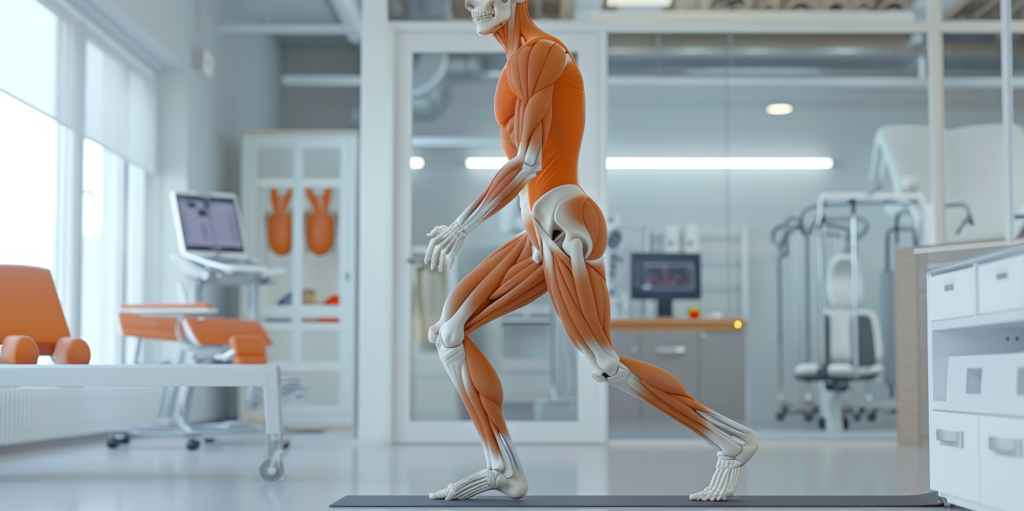
After exploring the science behind CBD’s potential effects on eccentric exercise, it’s time to review the current research. Recent clinical trials and studies are exploring how CBD might influence factors such as performance and post-exercise recovery, with a focus on understanding its interactions rather than confirming definitive impacts. Although these studies are still in the early stages, they offer valuable insights into the possible roles of CBD in sports performance and recovery (1).
One of the key findings from these studies is that initial research suggests CBD supplementation is being investigated for its potential role in managing responses to intense exercise, including exploration into systemic inflammation. Some studies have also suggested that CBD might help reduce the stress response during and after exercise, potentially complementing its anti-inflammatory properties. (3)
Nevertheless, it is essential to note that the findings from these studies are preliminary, and more research is necessary to confirm these effects. (2)
Study Methodologies
The studies conducted to understand the effects of eccentric exercise on muscle soreness have used a randomized, double-blind, placebo-controlled design. This methodology is considered the “gold standard” in clinical research. Researchers also followed rigorous ethical standards, ensuring all procedures comply with good clinical practices.
All research primarily involved a sample of exercise-trained individuals subjected to an experimental induction of delayed onset muscle soreness. DOMS is a common outcome of eccentric exercise. (2,8)
These studies, including the randomized controlled pilot trial, have been crucial in understanding the findings. (8) Various outcome measures were used to assess the effects of CBD, including:
- Pain
- Muscle Tension
- Range of Motion (ROM)
- Sleep Quality
- Mood and
- Cognitive Parameters.
Key Findings
When it comes to the key findings from these studies, there are some interesting insights to consider:
- CBD supplementation may potentially prevent declines in anaerobic fitness over time.
- CBD supplementation may reduce the interference of DOMS on daily activities.
- CBD supplementation did not alter measures of health-related fitness, mental health, and inflammation.
This suggests that CBD might be beneficial in maintaining performance and enhancing recovery following eccentric exercise.
Additionally, some studies have found that CBD might have the following benefits for exercise recovery:
- Reducing inflammation and pain.
- Potentially contributing to faster recovery.
- Affecting inflammation markers like Interleukin-6, a measure of systemic inflammation. (9)
However, it’s important to note that these findings are preliminary, and further research is needed to confirm these effects and to better understand the mechanisms by which CBD might influence recovery and performance.
Limitations and Future Research
One of the main limitations of the studies is the small sample size, which can limit the statistical significance of the findings. Future research should, therefore, include larger sample sizes and explore additional biomarkers for exercise-induced muscle damage and inflammation.
To better understand the potential benefits of CBD for sports performance and recovery, future studies should include eccentric and intensive resistance training protocols that cover a more comprehensive range of muscle groups.
These studies should also consider external factors affecting skeletal muscle regeneration and muscular strength. By doing so, we can better translate laboratory findings to real-world applications.
Practical Applications: Using CBD for Enhanced Recovery and Performance
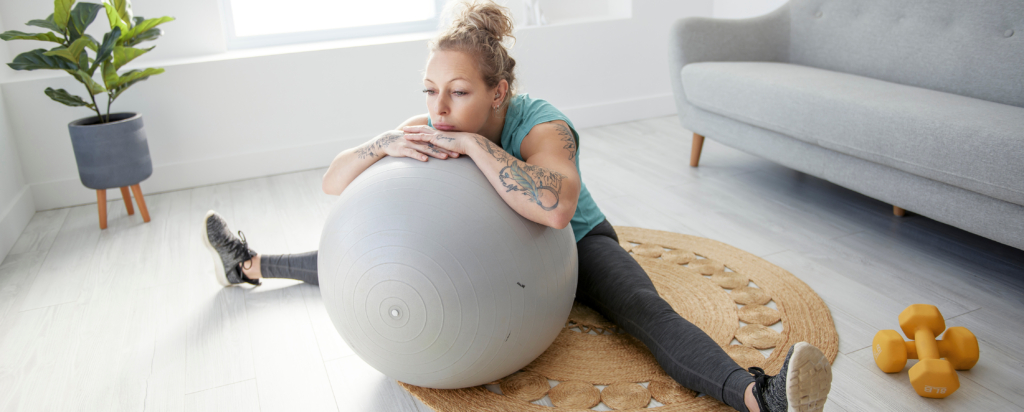 But how can athletes incorporate these findings into their training and recovery routines in practical terms? One of the key factors to consider is the dosage of CBD. The optimal dosage can vary depending on individual factors such as body weight and the intensity of exercise. It’s also important to consider the timing of CBD administration, as this can influence its effects on recovery and performance.
But how can athletes incorporate these findings into their training and recovery routines in practical terms? One of the key factors to consider is the dosage of CBD. The optimal dosage can vary depending on individual factors such as body weight and the intensity of exercise. It’s also important to consider the timing of CBD administration, as this can influence its effects on recovery and performance.
Furthermore, the form of CBD used can also influence its effects. CBD is available in various forms, including:
- Oils
- Capsules
- Topicals
- Edibles
Each form offers unique advantages and drawbacks. Ultimately, athletes should consider their needs when choosing a CBD product to boost performance and quicken recovery. (10)
Recommended Dosage and Timing
Athletes can follow some general guidelines regarding CBD dosage and timing for exercise recovery. When considering CBD, it’s advisable to start with a minimal dosage and adjust based on personal experience, under guidance from healthcare professionals. However, starting with a smaller dose and gradually increasing it until you achieve satisfactory results is better. (11)
Timing of CBD administration is also essential for optimal recovery. Taking CBD immediately after exercising or before sleep is generally recommended. However, it’s vital to note that the exact dosage and timing for optimal effects may vary between individuals and should be adjusted based on individual responses. (11)
Choosing the Right CBD Product
Choosing the right CBD product is another important consideration for athletes. CBD can be consumed in various forms, each offering unique advantages. Some common forms of CBD products include:
- Oils and tinctures: These allow for flexible dosing and may be absorbed more quickly and efficiently than other forms.
- Edibles and capsules: Edibles and capsules have a delayed onset of effects since they need to be processed by the digestive system.
- Topical CBD products: Topical products include lotions and creams, providing localized pain improvement without entering the bloodstream.
When selecting a CBD product, checking the certificate of analysis (COA) from a third-party lab can ensure the quality and accuracy of the product. (12)
Potential Side Effects and Precautions
Although CBD is generally considered safe, athletes should be aware of possible side effects and precautions. Like any supplement, CBD can be associated with certain effects such as fatigue or changes in appetite, highlighting the importance of proceeding with caution and consulting healthcare providers. (13)
To avoid harmful interactions with medications and address concerns about liver toxicity and fertility, athletes should only consume legally compliant CBD products certified by independent third-party labs.
Athletes’ Experiences with CBD and Eccentric Exercise
Beyond the valuable insights from scientific research on CBD’s potential benefits for eccentric exercise, athletes who have incorporated CBD into their training and recovery routines offer supplementary perspectives. From professional athletes to amateurs, many have turned to CBD to aid in:
- Recovery Post-Exercise
- Enhance Sleep Quality
- Reduce Anxiety
- Manage Pain
Let’s delve into their experiences and see what we can learn.
Professional Athletes’ Perspectives
Professional athletes, including those in male professional rugby union, are well aware of the demanding nature of intense training and competition. Many of them have started using CBD to aid in their recovery and improve their performance. Athletes from various sports, such as cycling and triathlon, have reported using CBD for accelerated recovery and better sleep quality.
USA Triathlon, an organization that follows USADA and WADA regulations, has recognized CBD among its athletes and has even partnered with a CBD product manufacturer. These experiences highlight the potential benefits of CBD for sports performance and recovery and indicate the growing acceptance of CBD in the professional sports industry. (14)
Amateur Athletes’ Experiences
Amateur athletes, who often train and compete at high levels, have adopted CBD into their routines. Surveys have shown that the majority of these athletes perceive the use of cannabis, which includes CBD and THC, as low risk for their health. This suggests a positive view towards using cannabis in their recovery routine. (15)
Lessons Learned and Best Practices
Athletes have gained valuable insights on the potential benefits of CBD for sports performance and recovery. They have found that CBD may help reduce inflammation and pain after exercise, which could enhance the recovery process. However, starting with a smaller dose and gradually increasing it until you achieve satisfactory results is essential. (11)
Additionally, the timing of CBD is also crucial. Many athletes prefer using CBD after exercise or before sleep to maximize its recovery benefits. These experiences highlight the importance of personalizing CBD use to meet individual needs, which can help athletes achieve better outcomes.
Legal and Ethical Considerations
CBD is a substance that could potentially benefit athletes in terms of performance and recovery. However, many legal and ethical implications need to be considered. Athletes must follow complex rules and regulations around CBD use, including:
- International anti-doping regulations
- National laws
- Governing Bodies and
- Sports organization policies.
They must also consider ethical concerns such as product safety, quality control, and long-term health effects.
The World Anti-Doping Agency (WADA) has approved CBD as an acceptable substance, but THC, the psychoactive compound in marijuana, is still banned. This means athletes can use CBD in their training and recovery routines, but they need to be careful about the THC content in CBD products. If the THC levels exceed permissible thresholds, it could lead to positive drug tests. (14)
Amateurs and professional athletes who advocate for CBD use must navigate legal, medical, and ethical issues to comply with the rules and uphold standards.
WADA and CBD
Athletes need to be aware of the World Anti-Doping Agency (WADA) regulations regarding substance use. WADA has removed CBD from its ‘Prohibited List’ since 2018, recognizing it as a distinct compound from THC-bearing marijuana. (16)
However, athletes should still exercise caution regarding the THC contents in CBD products, as THC is still banned. Although the effectiveness of CBD has not been scientifically proven, its removal from WADA’s prohibited list has resulted in more athletes using it in sports.
National and International Regulations
Different sports organizations have varying regulations on the use of CBD. Some organizations like the MLB, NBA, and USA Triathlon have allowed the use of CBD and even partnered with CBD companies. Whereas the NFL and NHL still prohibit the use of THC and synthetic cannabinoids, athletes who consume CBD oil containing more than 0.3% THC could face disciplinary action.
Athletes need to stay updated on the rules and regulations of their respective sports organizations as the acceptance of CBD in professional sports continues to evolve.
Summary
CBD is a substance that has caught the attention of athletes due to its potential benefits in terms of enhancing recovery and performance. Although research in this field is still in its early stages, initial findings suggest promising benefits. It is believed that the substance has anti-inflammatory and analgesic effects and interacts with the endocannabinoid system.
Anecdotal reports suggest that some athletes have experienced positive outcomes with CBD use, though further research is needed to substantiate these claims.. That said, it’s essential to consider legal and ethical considerations and any potential long-term health effects.
Frequently Asked Questions
Does CBD actually improve workouts?
Research into CBD’s potential impact on workouts is ongoing, with current studies aimed at understanding its effects rather than providing conclusive evidence (1).
Is it better to take CBD before or after a workout?
It is believed that taking CBD before and after a workout could have potential benefits. Prior to exercising, CBD is thought to provide a boost of energy and improve concentration. After exercising, it may help to decrease inflammation and provide improvement from sore muscles and joints.
Does CBD interfere with muscle growth?
CBD has been suggested as a possible aid in reducing inflammation without hindering the growth of muscles. This could potentially help in supporting muscle-building processes. However, it’s important to remember that insufficient direct evidence supports the claim that CBD causes muscle growth.
What is eccentric exercise, and how does it differ from concentric exercise?
Eccentric exercise involves muscle lengthening under an external load, while concentric exercise involves muscle shortening. Eccentric exercise is known for greater strength gains and requires less energy compared to concentric exercise.
1. Douglas, J., Pearson, S., Ross, A., & McGuigan, M. (2017). Eccentric exercise: physiological characteristics and acute responses. Sports Medicine, 47, 663-675. https://doi.org/10.1007/s40279-013-0052-y
2. Stone, W. J., Tolusso, D. V., Pancheco, G., Brgoch, S., & Nguyen, V. T. (2023). A Pilot Study on Cannabidiol (CBD) and Eccentric Exercise: Impact on Inflammation, Performance, and Pain. International journal of exercise science, 16(2), 109–117. https://www.ncbi.nlm.nih.gov/pmc/articles/PMC10124724/
3. Pinzone, A. G., Erb, E. K., Humm, S. M., Kearney, S. G., & Kingsley, J. D. (2023). Cannabis use for exercise recovery in trained individuals: a survey study. Journal of cannabis research, 5(1), 32. https://doi.org/10.1186/s42238-023-00198-5
4. Rojas-Valverde, D., & Fallas-Campos, A. (2023). Cannabidiol in sports: insights on how CBD could improve performance and recovery. Frontiers in pharmacology, 14, 1210202. https://doi.org/10.3389/fphar.2023.1210202
5. Atalay, S., Jarocka-Karpowicz, I., & Skrzydlewska, E. (2019). Antioxidative and Anti-Inflammatory properties of cannabidiol. Antioxidants, 9(1), 21. https://doi.org/10.3390/antiox9010021
6. Marques Azzini, G. O., Marques Azzini, V. O., Santos, G. S., Visoni, S., Fusco, M. A., Beker, N. S., … & Duarte Lana, J. F. S. (2023). Cannabidiol for musculoskeletal regenerative medicine. Experimental Biology and Medicine, 248(5), 445-455. https://doi.org/10.1177/15353702231162086
7. McCarberg, B. H., & Barkin, R. L. (2007). The future of cannabinoids as analgesic agents: a pharmacologic, pharmacokinetic, and pharmacodynamic overview. American journal of therapeutics, 14(5), 475-483. https://doi.org/10.1097/MJT.0b013e3180a5e581
8. Peters, E. N., Yardley, H., Harrison, A., Eglit, G. M., Antonio, J., Turcotte, C., & Bonn-Miller, M. O. (2023). A randomized, double-blind, placebo-controlled, repeated-dose pilot study of the safety, tolerability, and preliminary effects of a cannabidiol (CBD)-and cannabigerol (CBG)-based beverage powder to support recovery from delayed onset muscle soreness (DOMS). Journal of the International Society of Sports Nutrition, 20(1), 2280113. https://doi.org/10.1080/15502783.2023.2280113
9. Sermet, S., Li, J., Bach, A., Crawford, R. B., & Kaminski, N. E. (2021). Cannabidiol selectively modulates interleukin (IL)-1β and IL-6 production in toll-like receptor activated human peripheral blood monocytes. Toxicology, 464, 153016. https://doi.org/10.1016/j.tox.2021.153016
10. McCartney, D., Benson, M. J., Desbrow, B., Irwin, C., Suraev, A., & McGregor, I. S. (2020). Cannabidiol and sports performance: a narrative review of relevant evidence and recommendations for future research. Sports Medicine-Open, 6, 1-18. https://doi.org/10.1186/s40798-020-00251-0
11. Arnold, J. C., McCartney, D., Suraev, A., & McGregor, I. S. (2023). The safety and efficacy of low oral doses of cannabidiol: An evaluation of the evidence. Clinical and translational science, 16(1), 10–30. https://doi.org/10.1111/cts.13425
12. Millar, S. A., Maguire, R. F., Yates, A. S., & O’Sullivan, S. E. (2020). Towards better delivery of cannabidiol (CBD). Pharmaceuticals, 13(9), 219. https://doi.org/10.3390/ph13090219
13. Huestis, M. A., Solimini, R., Pichini, S., Pacifici, R., Carlier, J., & Busardò, F. P. (2019). Cannabidiol adverse effects and toxicity. Current Neuropharmacology, 17(10), 974–989. https://doi.org/10.2174/1570159×17666190603171901
14. Kennedy, M. (2022). Cannabis, cannabidiol and tetrahydrocannabinol in sport: an overview. Internal medicine journal, 52(9), 1471-1477. https://doi.org/10.1111/imj.15724
15. Docter, S., Khan, M., Gohal, C., Ravi, B., Bhandari, M., Gandhi, R., & Leroux, T. (2020). Cannabis Use and Sport: A Systematic Review. Sports health, 12(2), 189–199. https://doi.org/10.1177/1941738120901670
16. Houlihan, B., Vidar Hanstad, D., Loland, S., & Waddington, I. (2019). The World Anti-Doping Agency at 20: progress and challenges. International Journal of Sport Policy and Politics, 11(2), 193-201. https://doi.org/10.1080/19406940.2019.1617765
